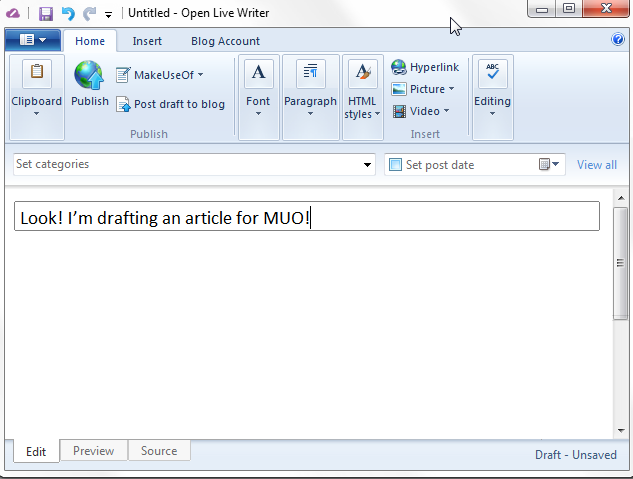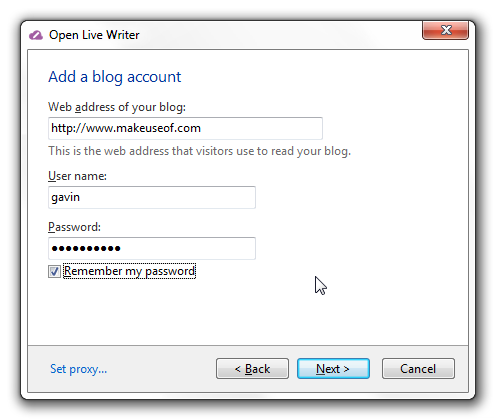

Many users regarded the original Windows Live Writer as one of the best programs Microsoft ever built. Sadly, it hasn’t been updated since August 2012. Turns out this wasn’t its death knell after all.
Microsoft recently announced that they turned over control of the Windows Live Writer application to the .NET Foundation, where it has become Open Live Writer. The new application will be open source, based upon a fork of Windows Live Writer, and will enable users to author, edit, and publish their work.
At the time, circa-2005, Onfolio Writer was one of the most popular WYSIWYG blogging platforms around. In 2006, Microsoft purchased Onfolio, acquiring Onfolio Writer in the process, keeping most of the original developers on-board, and ultimately oversaw the transition of Onfolio Writer into Windows Live Writer. Microsoft initially envisioned a multi-purpose content creation tool, linking between major web services and allowing its users to upload their written work around the world.

Despite the lack of continued development, and the absence of all but occasional security updates, Windows Live Writer continues to feature highly in blog authoring application lists.
From those beginnings comes latest iteration Open Live Writer, a new open source version. Microsoft Principle Program and Community Manager, Scott Hanselman, wrote on his personal blog:
“If you’re willing to put up with some bugs, then join us in this brave new world, you can download Open Live Writer…We’re calling today’s release version 0.5.”
“There was a lot involved both legally and technically as we were breaking new ground for Microsoft. Consider this. We’ve successfully open sourced a previously completely proprietary piece of Windows software that shipped as part of Windows Live Essentials. This software was used by millions and contained code as old as a decade or more. Persistence pays off.”
Open Live Writer has made a number of changes to the original code. The updated open source version has:

If you’ve never used it, I suggest you download the open source application and have a good poke around. It is not a difficult application to learn how to use, and you can be signed into your blog, up and writing within minutes. The UI remains roughly the same, which gives the application a distinctly old-ish feel – think Office 2010 – but the ease of use, one of the most important features of Windows Live Writer, has successfully made the transition to open source.

The appeal of Windows Live Writer lay in its range of blogging support: WordPress, Blogger, TypePad, and plenty more services can all be happily connected too, worked upon, and uploaded to. This hasn’t changed, and we would expect more services to arrive on Open Live Writer as time drips by.
One slight downside comes amongst talk of ongoing support for older systems. While the Open Live Writer Team can happily support their application on Window 10, the group said “We hope to support Windows 7 and Windows 8 for a while at least,” which, while far from a definitive ending, doesn’t sound entirely fantastic for users on those operating systems.
Many authors will be excited by the re-release of Windows Live Writer as an open source application. Live Writer has always supported a wide range of blogging services and the new iteration is set to be no different. The arrival of plugins will certainly increase the mass appeal, and as the project is now open source there is sure to be a growing community of ideas, guides, help, and activity.
What’s more though, is that Microsoft continues transferring once proprietary code to open source. This is remarkable, given their history of antagonizing the open source movement under former CEO Steve Ballmer. In the case of Live Writer, rather than trashing an unprofitable software, Microsoft has gone out of its way to make it open source and please its users. What’s next?
Are you excited about Open Live Writer? Which other Microsoft application should be open sourced? If you had to predict what they will open source next, what would be your best guess?




 Pokemon X and Y: Mega Stones Location Guide
Pokemon X and Y: Mega Stones Location Guide Tips on How to Log into Facebook using your name on PlayStation 4
Tips on How to Log into Facebook using your name on PlayStation 4 Persona 5 Release Hype Builds
Persona 5 Release Hype Builds Saints Row 4 Wiki: Everything you want to know about the game .
Saints Row 4 Wiki: Everything you want to know about the game . Battlezone Wiki – Everything you need to know about the game .
Battlezone Wiki – Everything you need to know about the game .